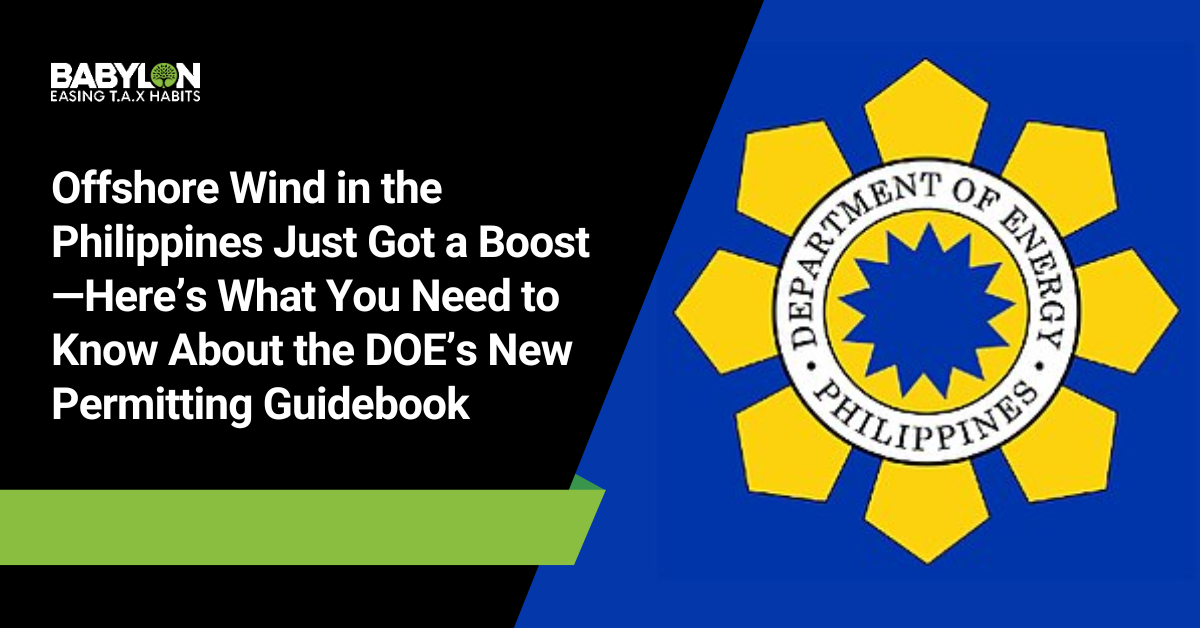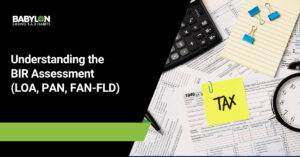What’s the Big Deal?
The Department of Energy (DOE) just released the “Compendium: Guidebook to Permitting and Consenting for Offshore Wind Energy Projects.” In a sector long known for red tape, this is a breakthrough document—designed to make it faster, clearer, and more consistent to develop wind farms in Philippine waters.
Whether you’re a local firm, global investor, or LGU navigating coastal regulations, this guidebook is your navigation chart for building offshore wind projects—legally, safely, and sustainably.
Why This Guidebook Matters
- Cutting Delays: Offshore wind involves over 25+ permits and agencies. This guide streamlines timelines and clarifies documentation to reduce bottlenecks.
- Unified Approach: Backed by Executive Order 21 (2023), it’s part of a national push to integrate permitting under the EVOSS system—a digital one-stop shop.
- Supports the 51 GW pipeline: With more than 65 contracts already awarded, the guidebook could help turn paper projects into power plants.
- Protects People & Planet: Includes detailed instructions on ECCs, Indigenous consultations (FPIC), and marine spatial planning.
What’s Inside the Guidebook?
| Section | What You’ll Find |
| Pre-Development | Site selection, resource assessments, and area clearances |
| Development & Construction | Permits from MARINA, PCG, NAMRIA, LGUs, DENR, NCIP, etc. |
| Operations & Maintenance | Grid interconnection, monitoring, and safety protocols |
| Decommissioning | Environmental recovery, equipment removal, and reporting |
Bonus: Every stage includes flowcharts, timelines, agency contacts, and even ESIA best practices—developed with support from NIRAS and international consultants.
What Stakeholders Should Do
For Developers:
- Review your current timelines—adjust them based on the guidebook’s clearer workflow.
- Plug into EVOSS early. It’s now the backbone of permit tracking and submission.
- Align with DOE’s energy planning and mapping zones.
For LGUs & Local Agencies:
- Familiarize with your role in the new process—especially on zoning, social acceptability, and marine spatial approvals.
- Coordinate with DOE’s offshore wind task force for tech and legal briefings.
For Investors:
- Use the guidebook as a project feasibility tool. Red flags and gray areas? They’re easier to spot now.
- Consider this an early-mover window: policy support is strong, and permitting is finally catching up.
Offshore Wind = Big Numbers
- 178 GW of technical potential in PH waters
- 35% renewable energy target by 2030, rising to 50% by 2040
- DOE has already awarded 51+ GW worth of OSW service contracts—but only a few have broken ground
This guidebook is a shot in the arm for that pipeline—and a confidence signal to global green energy players.
Final Word
In the world of renewable energy, policy clarity is currency. The DOE’s new guidebook for offshore wind permitting doesn’t just tick boxes—it builds momentum. It helps good projects move faster, protects communities, and makes sure no one’s flying blind.
Just like Babylon2K simplifies tax and compliance for pros across the Philippines, this guidebook simplifies something just as complex: the sea of permits behind our clean energy future.
DISCLAIMER: This article is developed by subject matter experts at Babylon2k. This is for general information only and does not constitute expert advice. It is based on current regulations and may not account for all related topics. Any tax or compliance guidance provided cannot be used to avoid penalties or promote specific actions. Laws and interpretations may change over time, which could affect the accuracy of this report. We are not obligated to update this advisory if new regulations arise.
How We Can Help
Babylon2k’s B.E.T.H. can also help you when you need more information and clarification on taxes, businesses, finance, laws, and more. Learn More >
☎️ Get in Touch!
- Request a Free Consultation | Request Consult
- Message us on Viber/ Whatsapp Number @ +63-927-945-3382.
- Email us directly at [email protected]
RESOURCES
Compendium OSW Guidebook | View here.






